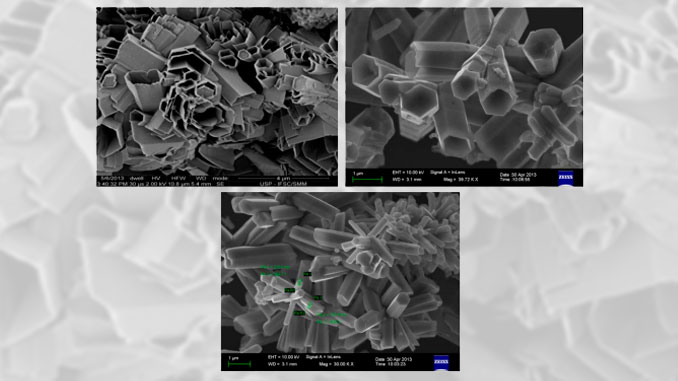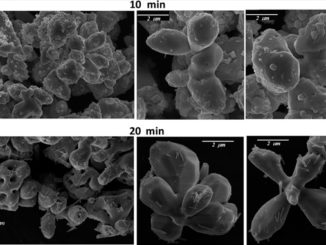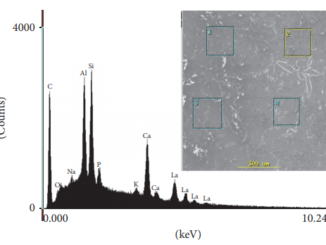
Author(s): Dias, Hercules Bezerra; Basso Bernardi, Maria Ines; dos Santos Ramos, Matheus Aparecido; et al.
Keywords: composite resins; oxides; products with antimicrobial action; Streptococcus mutans
Abstract: The aim of this study was to evaluate the antibacterial activity of a composite resin modified by 3D zinc oxide (ZnO) microstructures and to verify possible alterations on its mechanical properties. ZnO was synthesized by hydrothermal approach and characterized by X-ray diffraction (XRD), surface area by Brunauer, Emmett and Teller (BET), Fourier transform infrared spectroscopy (FTIR) and Field emission scanning electron microscopy (FESEM). The minimum inhibitory concentrations of ZnO against Streptococcus mutans, Escherichia coli, Staphylococcus aureus, and Candida albicans were determinated. The composite resin FiltekTM Z350XT (3M of Brazil) was blended with 0.2%, 0.5%, and 1% in weight of ZnO and submitted to antibacterial assay by direct contact test against S. mutans, the leading cause of dental caries and the most cariogenic oral streptococci. Additionally, it was performed compressive and diametral tensile strength tests of the modified composite resin. Microrods and hollow microrods of ZnO were obtained and its MIC values were found to be 125 μg/mL for S. mutans, 500 μg/mL for C. albicans and 62.5 μg/mL for S. aureus. For the tested concentrations, it was not found MIC against E. coli. The direct contact test showed a significant antibacterial capacity of modified composite resin (p > 0.05 for all concentrations). The compressive and diametral tensile strength remains no changed after inclusion of microparticles (p > 0.05 for all concentrations). The modification of the composite resin with small amounts of ZnO microparticles significantly inhibited the S. mutans growth on resin surface without significant alterations of its mechanical strength.
See PDF: Zinc oxide 3D microstructures as an antimicrobial filler content for composite resins
DOI: http://onlinelibrary.wiley.com/doi/10.1002/jemt.22840/epdf




